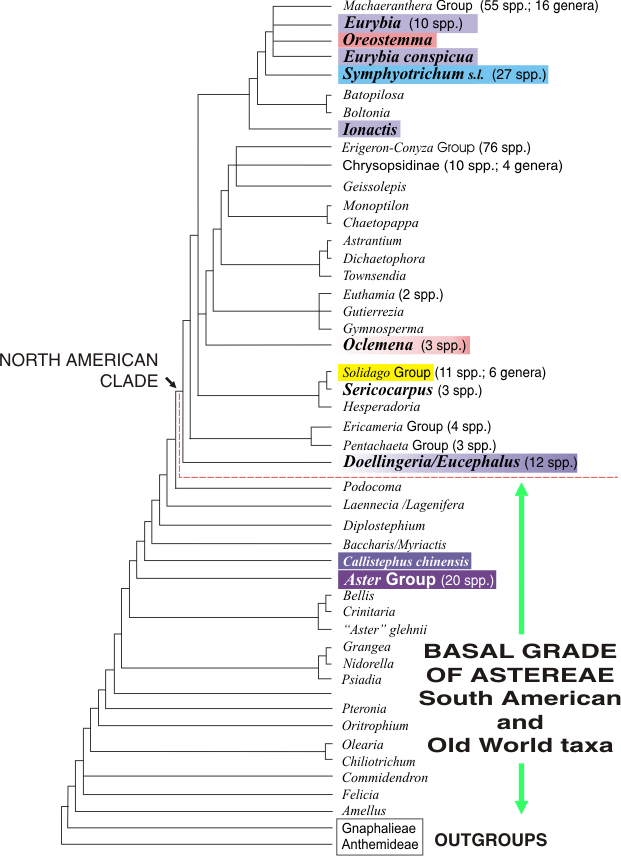This is a summary of the phylogeny of the Tribe Astereae based on ITS gene sequence data.
The phylogeny is based on sequences of 313 cases of 248 taxa of Astereae and 13 outgroup taxa (not all shown). It clearly demonstrates that “asters” are polyphyletic within the tribe. The genus Aster in this diagram includes only Old World species. Based on Brouillet et al. (2001) including GeneBank sequences of Morgan (1997), Noyes & Rieseberg (1999), Noyes (2000) and Markos & Baldwin (2001). A much larger phylogeny with more than 800 taxa was included in Brouillet et al. (2009).
